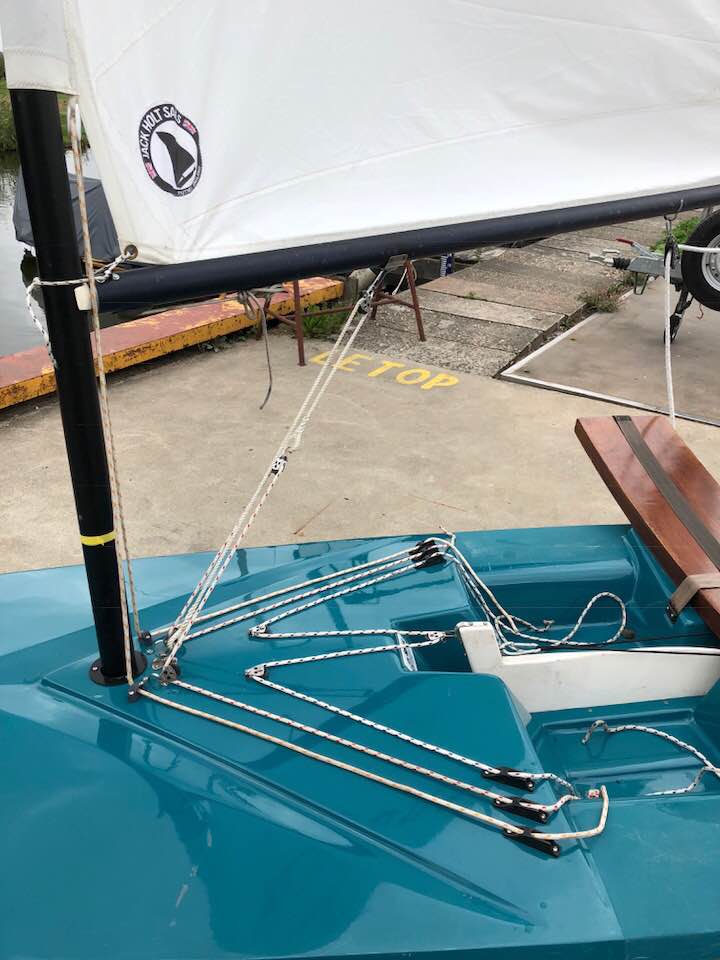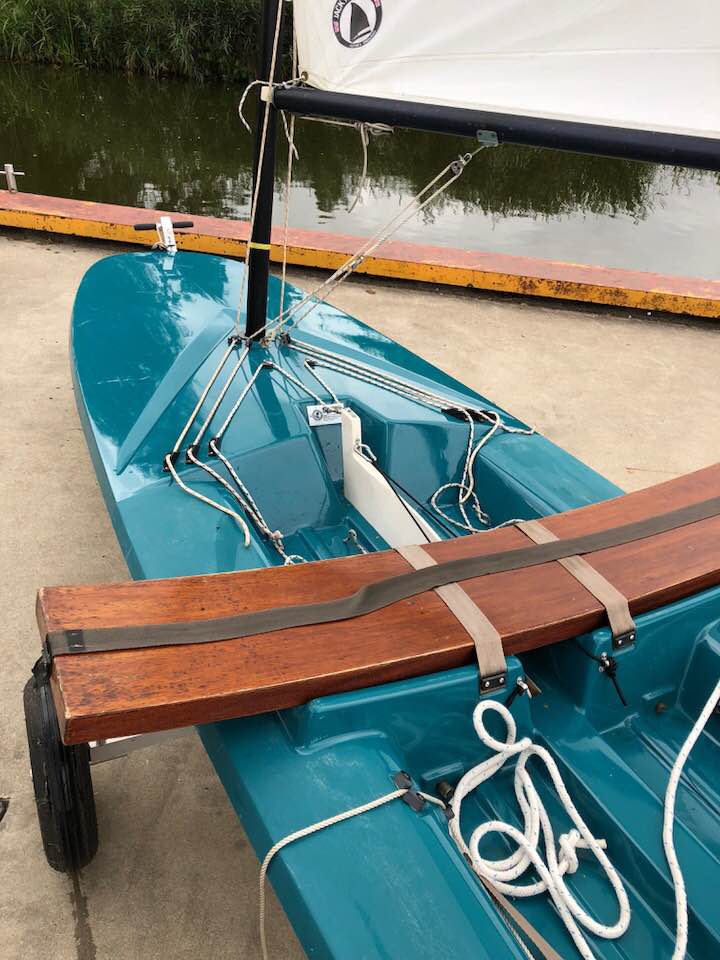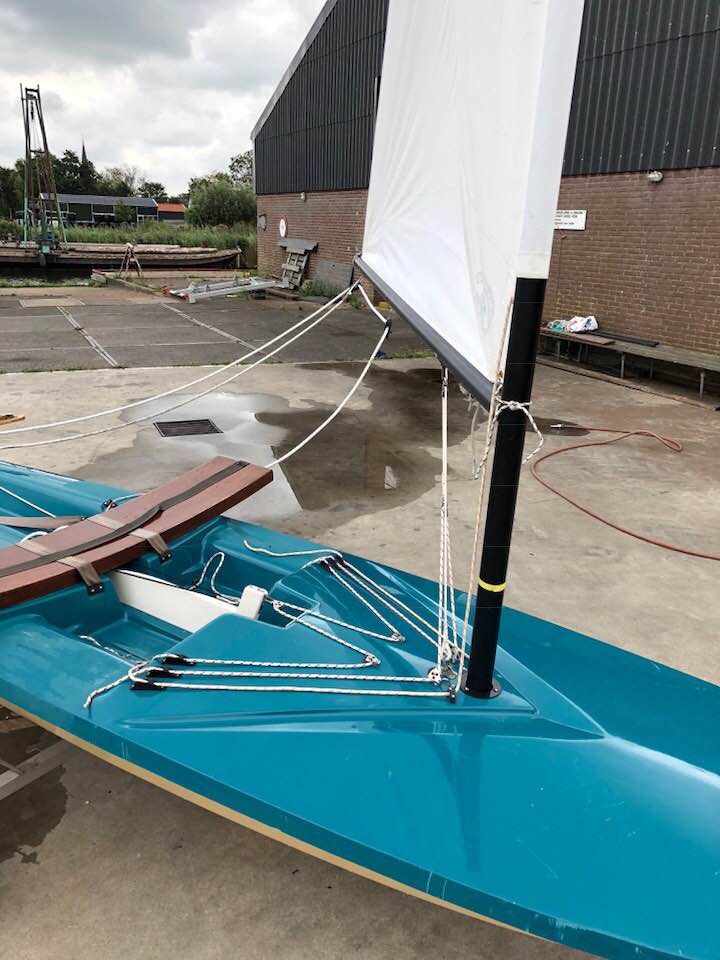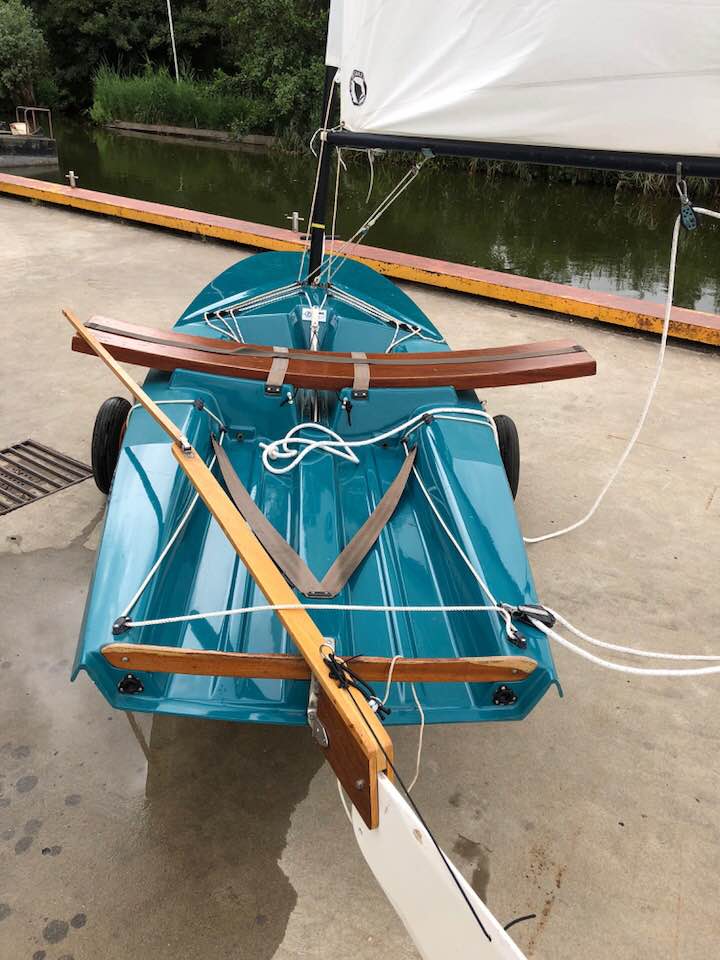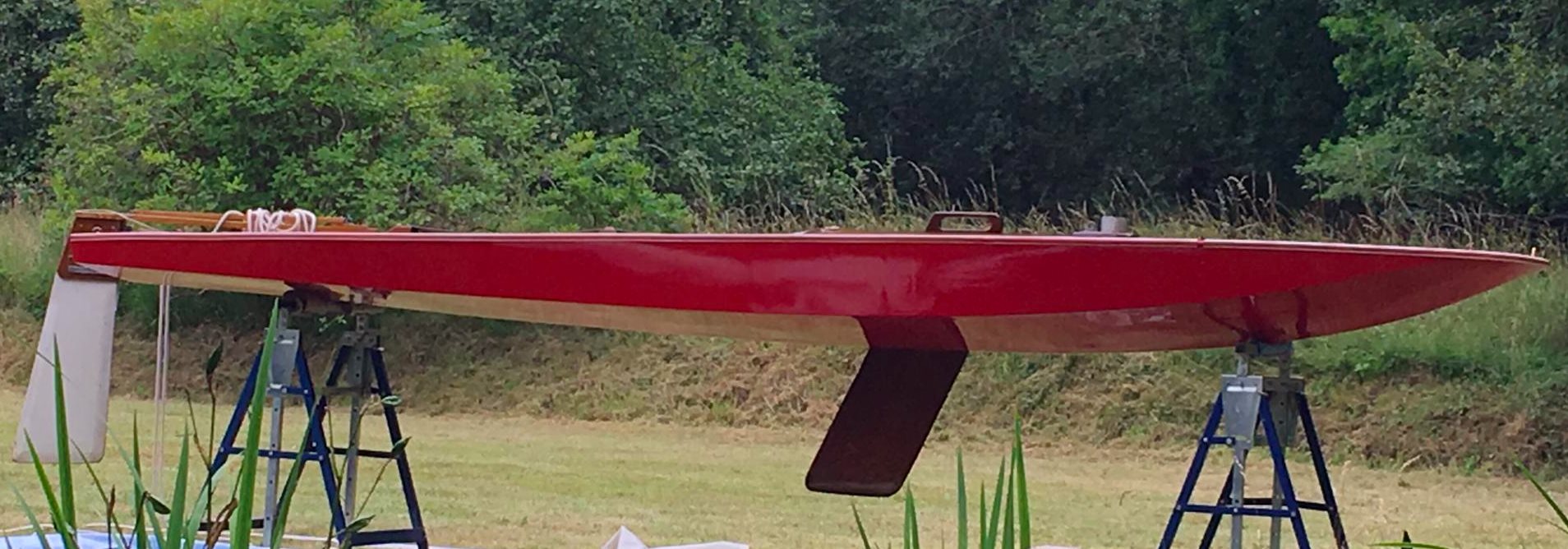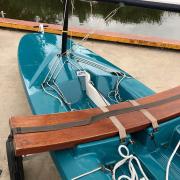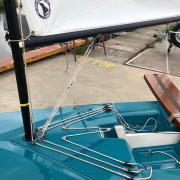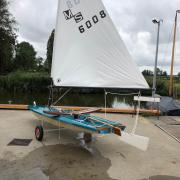In 1975 Richmond Marine asked Ian Proctor to update the design of the Minisail, building on the success of the Minisprint Mk1. The brief included a move to a swinging centreboard (which is understood to have necessitated a rule change) as well as fully self-draining cockpit and built-in "bridge deck" for the sliding seat. What is much less obvious are the other changes that were made to the hull - material from the period describes "filling a few hollows that had crept into the moulds", however, in reality the hull is a completely new mould - wider, deeper and with transverse curvature to the bottom panel. The waterline length is increased too with a more pronounced V running up to the bow. The boat made its first public appearance at the 1976 Earls Court boat show (together with a winged Meson).
All those changes should have produced a much faster boat, but sailers from the period reckon that the MiniSprint Mk2 was not the rocketship that Richmond undoubtedly hoped for. In part this is probably due to the weight - boats today typically weigh 10-15kg over the minimum, thats 15-20% over-weight! The PY number hasn't ever been different as far as the author is aware.
The MiniSprint benefited from dual controls as standard - initially all three (downhaul, kicker and outhaul), but the centreboard was modified to use a rope uphaul, re-using one set of cleats and leaving the outhaul terminating at a cleat on the inboard end of the boom. The boat was also designed to have a tracked centremain - a few boats were supplied in this configuration but it vanished from the sales literature very quickly; its a lot trickier to sail but it does work well if you can master it.
The rig was largely unchanged from the MiniSprint Mk1 with the larger boom section with built-in track for a boltrope in the foot - this really must have been fashion rather than than anything else - the sail doesn't set better and its is much trickier to rig... (see the final few paragraphs of the 1976 Yearbook for one approach). The mast fittings are all Holt Allen and the sails were by Holt too. Some of the surviving MiniSprint Mk2s have a different mast arrangement with the top section plugging into (rather than over) the lower; the topmast is a larger wall thickness.
Before the end of the 1970's Richmond Marine gave up on the MiniSprint and sold the moulds which are now owned by the association.
Things to watch out for with the MiniSprint these days:
- the hull/deck joint can leak around the rear of the centreboard case;
- fittings can pull out notably pintles, though they are a much improved design over early boats, and mainsheet horse eyes - the mainsheet horse is an easy fix - just move the fittings to the gunwale so they can be through-bolted. For the pintles then remove the "transom" and cut a hole in the hull that will be covered when the transom is re-fitted, shape a piece of durable timber and embed thoroughly in epoxy putty before refitting the cut out fibreglass. Once its all sealed and the transom and pintle refitted then its invisible and should last another 30 years!
- The mast step has a steel plate embedded somewhere in the bottom which rusts and can cause damage - this is typically very visible from beneath the boat as rust-staining;
- And lastly the drain tubes from the front to the aft cockpit tend not to be connected (so both sets of holes drain straight into the hull!) - an easy fix with four bungs or add some 4" hatch covers in the back of the seat frame and sort the centreboard case at the same time.
Overall they are pretty robust.
Click the image below for a slideshow of MiniSprint Mk2 pictures.
